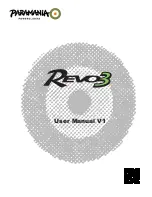
- Use only lines that have no knots in them, as knots can weaken lines by as much as 50%.
- Do not touch the lines of the kite, unless the kite has been secured to the ground. An unsecured kite can re-
launch unexpectedly, putting the line dangerously under tension.
- Make sure never tie lines around your arms or other body parts.
2.4. Recommendations to minimize the dangers from your kiteboard
– surfboard
- Make sure to wear the appropriate protections and to avoid any collision with the kiteboard or the
surfboard (it might cause serious head, legs and feet injuries)
2.5. Recommendations to minimize the dangers to uninvolved third parties
- Do not kite in locations where uninvolved third parties might get injured.
- Avoid flying the kite close to surfers, swimmers, kayakers, windsurfers, water-skiers and boaters.
2.6. Recommendations to minimize the weather related risks
- Do not practice kiteboarding with offshore wind.
- Pay attention when kiting with onshore wind.
- Get detailed information about the kiting spot (current and tide conditions)
- Always consult the weather report and the local riders on prevailing weather conditions.
- Never use the kite when wind forces are so intense that you are not able to control precisely your kite.
- Do not use the kite when wind conditions are likely to change dramatically.
- Always check the weather report and never use this kite when thunderstorms are approaching or when such
storms have a good chance of developing.
- Should a storm approach quickly exit the water instantly because you could get in a life threatening
situation (you might be struck by lightning).
- Consider always to practice kitesurf only with appropriate weather conditions and with a correct kite size in
relation to your weight, skill level and wind speed.
K1 - YO Kite User Manual
3



































